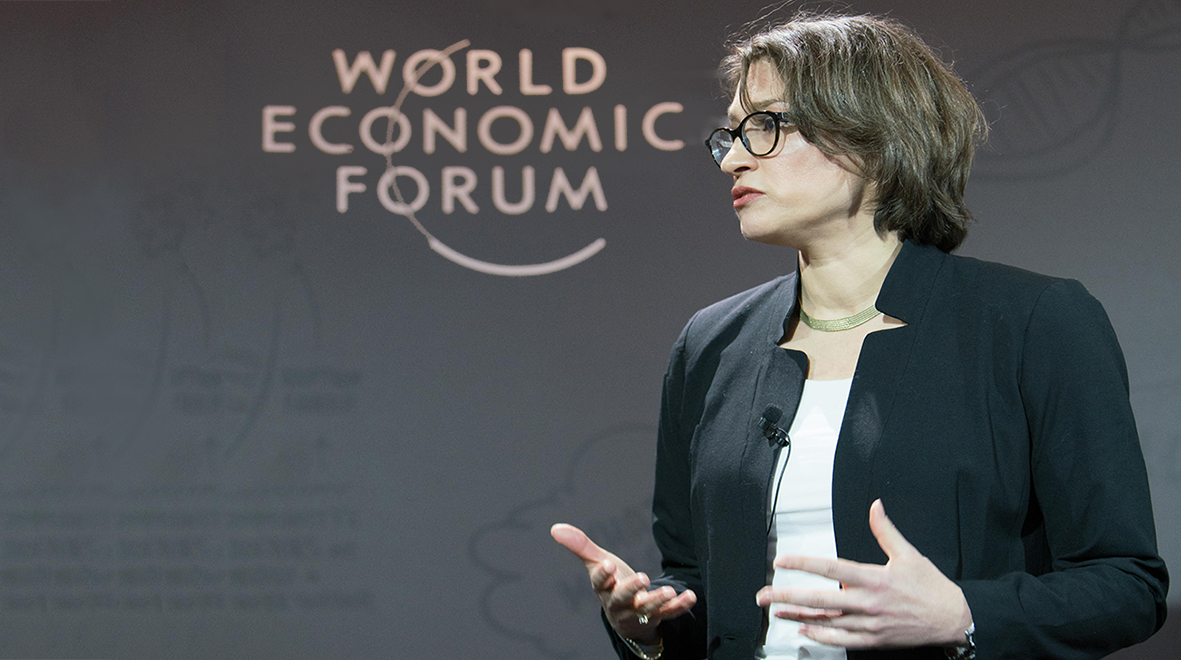
Katharina Hauck speaking at the Annual Meeting 2017 of the World Economic Forum in Davos (Copyright by World Economic Forum / Sikarin Thanachaiary)
To mark World AIDS Day 2017, we have published a series of blog posts to highlight the important and varied research that takes places at Imperial. Three experts from Faculty of Medicine share their interest in HIV/AIDS which spans from the elusive vaccine to the economics of the epidemic.
World AIDS Day takes place annually on 1 December as an opportunity for people worldwide to unite in the fight against HIV and to show support for people living with HIV/AIDS.
The role of an economist in the HIV epidemic
As an economist, my research on HIV takes a higher-level population view. We advise policy makers in governments and international organisations on the cost-effectiveness of preventive and treatment interventions in the countries most ravaged by HIV. By estimating the benefits and costs of interventions, we can identify the ones that promise greatest improvements in population health.
The largest community-randomised trial of the universal HIV test and treat strategy
For example, we are currently conducting an economic evaluation of HPTN071/PopART; the largest study on the impact of a package of testing and prevention interventions on new infections in Zambia and South Africa. We measure the benefits of treatment to HIV-infected individuals who are found and diagnosed earlier because of PopART, and we expect that the interventions will also prevent new infections. It’s tricky to estimate exactly how many individuals will be spared from getting infected in future, but we work with epidemiologists who use complex modelling to project the number of prevented infections into the future.
Measuring the value of health
Infections prevented is an abstract number; that’s why we also estimate how HIV-positive individuals actually value their own health in several dimensions, including mental health, and how it compares to individuals who are HIV-negative. We build that into the economic analysis to get a better idea of what benefits these interventions bring in the perception of individuals. We also estimate improvements in productivity of individuals who work, look after the house, or care for children. For communities where the adult population was decimated by HIV 15 or 20 years ago, these are also very important benefits of HIV interventions that we take into account.
Cost-effectiveness is crucial
On the other side, the cost of interventions are of course important for an economic analysis, and we take great care to estimate them correctly. We actually visit healthcare facilities to collect data on expenditures. Many facilities don’t have electronic records which means collating costing data from paper records – a painstaking process! But it’s worth it because such data allows us to calculate what it actually costs to implement interventions. This cannot be determined in a laboratory. Estimates of benefits and costs are crucial information to determine which interventions are most cost-effective, and worth implementing on a large scale.
I know that I am far removed from actual patients with my research, but I hope that I can indirectly contribute to preventing new infections and improve the health of all those who are already infected with HIV.
Dr Katharina Hauck (@kdhauck) is a senior lecturer in Health Economics at the Department of Infectious Disease Epidemiology, School of Public Health.
Read our other World AIDS Day posts:
Professor Robin Shattock on the elusive HIV vaccine
Professor Mark Bower on HIV-related cancers